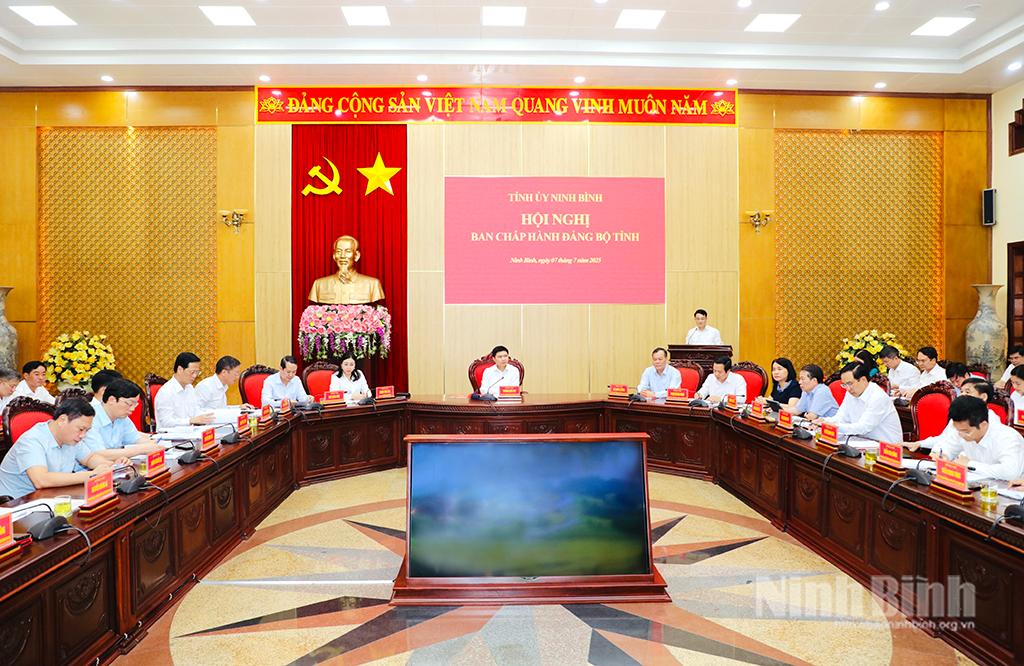The journey for Trang An landscape complex to the World heritage list

The inclusion of Trang An complex into the World natural heritage list has become all the more urgent and significant in popularizing the image of Vietnam to foreign friends in the context of the global integration. On September 30, 2011, the Prime Minister allowed the Ministry of Culture, Sports and Tourism to coordinate with Ninh Binh province to submit a dossier on Trang An complex to the United Nations Educational, Scientific and Cultural Organization (UNESCO) for the world heritage site status.
To this end, Ninh Binh province established a steering committee headed by the chairman of the provincial People's Committee, and a management board for the Trang An landscape complex.
On July 24-25, 2012, Ninh Binh province, in coordination with the Ministry of Culture, Sports and Tourism, the Vietnam National UNESCO Commission and the National Cultural Heritage Council, held a seminar to define the globally significant values of the Trang An complex which were included in the dossier. After two days of discussion, domestic and foreign participants agreed that the application should feature the site's archaeological, aesthetic and geological values. Professor Paul Dingwall from UNESCO's World Conservation Society said human evolution depends on their adaptability to changes in the environment, and that Trang An provided strong evidence of this adaptability. The Trang An dossier has a high possibility of success if it is systematically prepared, he concluded.
Trang An - traces of human activity (Criterion V) Exploration of some of the highest altitude caves dotting the complex has revealed archaeological traces of human activities dating back almost 30,000 years. They illustrate the residence on these mountains by hunter-gatherers and how they adapted to climatic and environmental changes. Trang An - a unique beauty (Criterion VII)
The tower karst landscape of Trang An is among the most beautiful and spectacular areas of its kind anywhere on earth. Dominating the landscape is an array of forest-covered, 200-m-high limestone rock towers, linked in places by sharp ridges enclosing deep depressions filled by waterways that are inter-connected by a myriad of subterranean cave passages. The forests sit amid extensive rice paddy fields and streams, with local farmers and fishermen engaged in their traditional way of life. The romantic mountains, secretive caves and sacred places in Trang An have inspired people through countless generations. It is a place where culture is mixed with the wonder, mystery and magnificence of the natural world. Trang An - museum of earth's history Trang An is an exquisite geological property that displays more clearly than any other place on Earth the final stages of the tower karst landscape evolution in a humid tropical environment.
Deep dissection and uplift of a limestone massif over a period of 5 million years has produced a series of classical karst landforms, including towers, cones, enclosed depressions (cockpits), interior-draining valleys (poljes), foot caves and subterranean cave passages with speleothems.
Of great significance is the presence of transitional forms between 'fengcong' karst with ridges connecting towers, and 'fenglin' karst where towers stand isolated on alluvial plains. During Pleistocene and Holocene times, the landscape was completely transformed by repeated marine transgression and regression. Traces of sea level are seen on an altitudinal series of erosion notches in cliffs, with associated caves, wave-cut platforms, beach deposits and marine shell layers.
With relentless efforts by local and central authorities and support from both domestic and foreign experts, the Trang An complex dossier was submitted to the World natural heritage committee on January 17, 2013. UNESCO experts made a fact-finding tour to Trang An from August 12 to 18, 2013. Meeting the UNESCO criteria on outstanding universal value of World Heritage, the Trang An Landscape Complex was recognized as a world mixed natural and cultural properties by the organization, the first of its kind in Vietnam and Southeast Asia in June 2014 at the 38th session of the World Heritage Committee in Doha, Qatar.
It is a long journey for Trang An complex to reach the World natural heritage list, but how to keep the tittle is much more difficult, therefore Ninh Binh province should devise a master plan for the preservation of Trang An at an early date. Besides, raising environmental awareness among the local population and visitors is necessary for preserving the treasure for the future generations.
(Translated by Nguyen Thuy)


